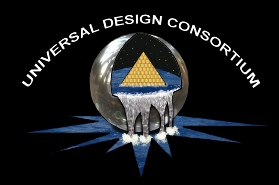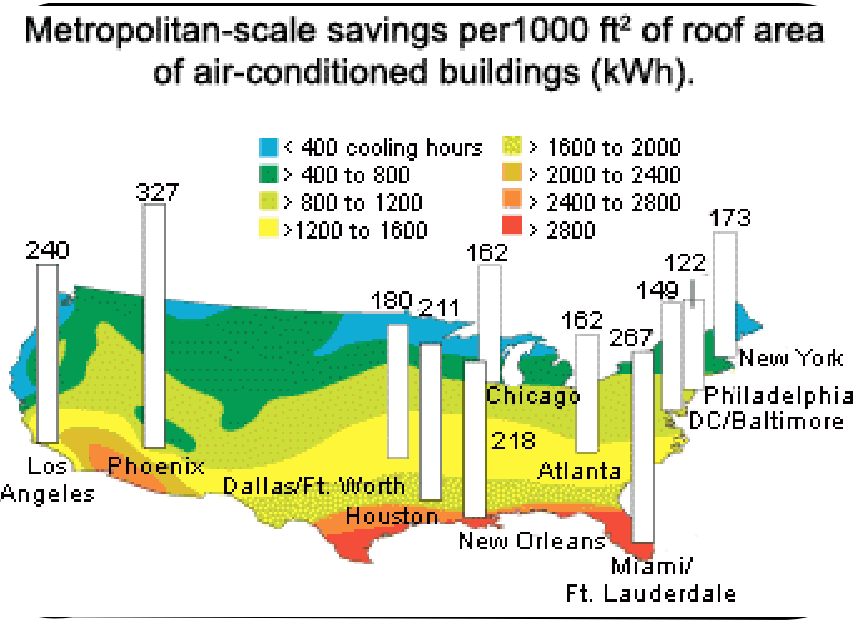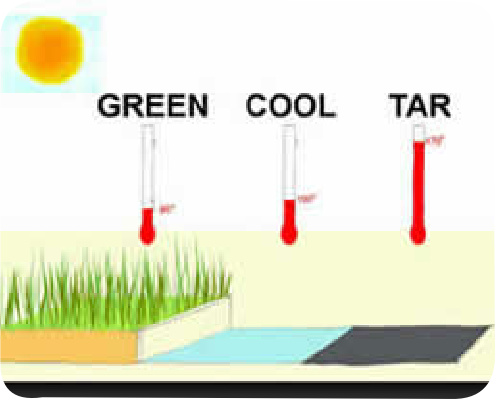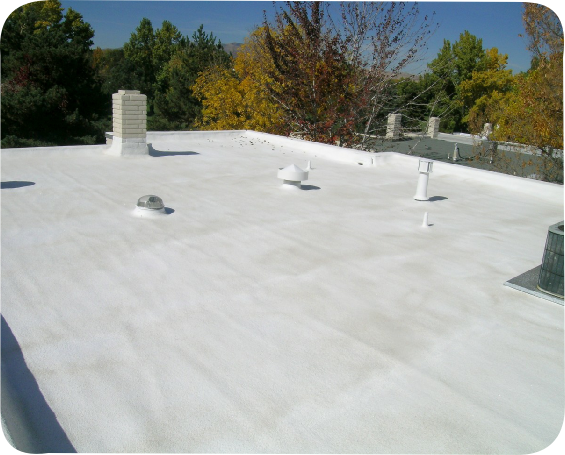



In the world of industrial and commercial buildings, a roofing system that can deliver high solar reflectance (the ability to reflect the visible, infrared and ultraviolet wavelengths of the sun, reducing heat transfer to the building) and high thermal emittance (the ability to release a large percentage of absorbed, or non-
Cool roofs enhance roof durability and reduce both building cooling loads and the urban heat island effect.
Also known as albedo, solar reflectance is expressed either as a decimal fraction or a percentage. A value of 0 indicates that the surface absorbs all solar radiation, and a value of 1 represents total reflectivity. Thermal emittance is also expressed either as a decimal fraction between 0 and 1, or a percentage. A newer method of evaluating coolness is the solar reflectance index (SRI), which incorporates both solar reflectance and emittance in a single value. SRI quantifies how hot a surface would get relative to standard black and standard white surfaces. It is defined such that a standard black (reflectance 0.05, emittance 0.90) is 0 and a standard white (reflectance 0.80, emittance 0.90) is 100.
Cool roofs are an effective alternative to bulk attic insulation under roofs in humid tropical and subtropical climates. Bulk insulation can be entirely replaced by roofing systems that both reflect solar radiation and provide emission to the sky. This dual function is crucial, and relies on the performance of cool roof materials in both the visible spectrum (which needs to be reflected) and far infra-
Cool roof can also be used as a geoengineering technique to tackle global warming based on the principle of solar radiation management, provided that the materials used not only reflect solar energy, but also emit infra-

Metropolitan-
Benefits of Cool Roofs
Most of the roofs in the world (including over 90% of the roofs in the United States) are dark-
· Increased cooling energy use and higher utility bills;
· Higher peak electricity demand(the maximum energy load, in megawatts, an electric utility experiences to supply customers instantaneously, generally experienced in summer late afternoons as businesses and residences turn up their air conditioners), raised electricity production costs, and a potentially overburdened power grid;
· Reduced indoor comfort;
· Increased air pollution due to the intensification of the "heat island effect"; and
· Accelerated deterioration of roofing materials, increased roof maintenance costs, and high levels of roofing waste sent to landfills.
A large commercial, industrial or multifamily residential building with a dark colored roof will consume more energy for air conditioning than a “cooler” building – a strain on both operating costs and the electric power grid. Cool roofs offer both immediate and long-
· Reduce building heat-
· Create savings on summertime air conditioning expenditures.
· Enhance the life expectancy of both the roof membrane and the building’s cooling equipment
· Improve thermal efficiency of the roof insulation; this is because as temperature increases, the thermal conductivity of the roof’s insulation also increases
· Reduce the demand for electric power by as much as 10 percent
· Reduce resulting air pollution and greenhouse gas emissions
· Provide energy savings, even in northern climates

Illustration showing temperature variations in regard to roof finishes.
Types of Cool Roofs
Cool roofs for commercial and industrial buildings fall into one of three categories: roofs made from inherently cool roofing materials, roofs made of materials that have been coated, or green planted roofs.
Inherently Cool Roofs
White vinyl roofs, which are inherently reflective, achieve some of the highest reflectance and emittance measurements of which roofing materials are capable. A roof made of thermoplastic white vinyl, for example, can reflect 80 percent or more of the sun’s rays and emit at least 70% of the solar radiation that the building absorbs. An asphalt roof only reflects between 6 and 26% of solar radiation, resulting in greater heat transfer to the building interior and greater demand for air conditioning – a strain on both operating costs and the electric power grid.
Coated Roofs
To make a roof reflective, present technology is best obtained with white paint, but U.S. ENERGY STAR awards may soon be available for "cool colors" in addition to white painted roofs. Cool roof coatings function across a broader spectrum of solar radiation than white paint. Highly emissive and reflective cool roof painting systems are available in Australia for a material cost, epoxy primer and highbuild coolroof, so this alternative solution should not be ignored in tropical northern Australia.
The recent boom in "green" construction products has led to several new cool roof coatings and systems. Two such coatings are a white paint based products called, "Hyperglass Rubber Roof Coating" and "Hyperglass Rubber Roof Finishing Top Coat", both products were created by noted, retired inventor Col.Ronald Savin and are marketed by Hyperseal, Inc.
The innovation of these cool roof coatings is the addition of a substantial amount of "hollow glass microspheres" to the formulation. The addition of glass to paint is not new and has been known to increase its insulating and reflective properties as well as its scrubability. It has previously been marketed separately as an additive to normal white paint. Hyperglass is the first coating on the market to claim the glass will stay in solution, rather than traditional methods of adding glass which require immediate application and constant stirring to keep the glass from separating out of the paint Insuladd. This formulation is patented and has been nominated for a "2008 Precision Craft Green Log Home and Lifestyle" award.
Green Roofs
Planted roofs typically consist of an insulation layer; a waterproof membrane; a drainage layer, usually made of lightweight gravel, clay, or plastic; a geotextile or filter mat that allows water to soak through but prevents erosion of fine soil particles; a growing medium; plants; and, sometimes, a wind blanket. Green roofs are classified as either intensive or extensive; some green roof designs incorporate both intensive and extensive elements.
Intensive green roofs require at least one foot of soil and appear as a traditional garden with trees, shrubs and other attractive landscapes. They are multi-
Extensive roofs usually require less maintenance. The soil is shallower (less than 6 inches) and home to smaller, lighter plants such as mosses or wildflowers.
Both types of green roofs offer a variety of benefits including:
· Improved air quality as the plants absorb and convert carbon dioxide to oxygen
· Long lifespan -
· Excellent insulation
· Cooled surrounding environment

A solid membrane roof system with a white finish allows for continuous water protection and for a high emissivity factor.
